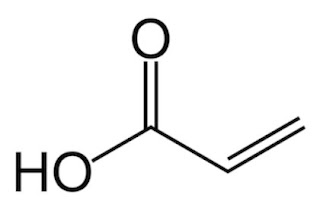Kona Demonstration Facility (KDF) - Cellana’s algal demonstration biorefinery
Name
|
Kona Demonstration Facility (KFD)
|
Company
|
|
Location
|
Kona (Hawaii’s Big Island, USA)
|
Category
|
Demonstration
|
Status
|
Running
|
Platforms
|
Oil
|
Feedstock
|
Microalgae
|
Products
|
Biofuels
(ReNewTM Fuel),
omega-3 fatty acids (ReNewTM
Omega-3) and feed (ReNewTM
Feed)
|
Start-up
|
2009
|
Production capacity
|
15
tons of algae biomass since 2010 for testing and business development purposes
(Reference 2, march 2015)
|
Figure
1. Aerial view of KDF (extracted from Reference 2)
GENERAL
INFORMATION
Cellana
is a Hawaii-founded company focused on developing algae-based biofuels and
bioproducts (feed, cosmetics, industrial chemicals and other valuable products)
and reducing industrial emissions of CO2. It intends to construct
and operate commercial algae-based biorefineries to achieve these goals.
Since
2009, Cellana operates its KDF on Hawaii’s Big Island. It is a 2.5 ha site (1,600
m2 under roof and 1 ha of cultivation systems) in Kona with
approximately 1 Ml of cultivation capacity. KDF is designed to execute and
support all stages of the production process at demonstration scale.
CULTIVATION
TECHNOLOGY
At
KDF, algae are cultivated in Cellana’s proprietary hybrid system (ALDUO™
technology covered by US Patents 7,770,322 & 5,541,056) using a
combination of photobioreactors (25,000 L) and open seawater ponds (60,000 L).
Photobioreactors (PBRs) ensure continuous production of biomass with maximum
cell division and low contamination risk (nutrient replete stage). Biomass from
PBRs are inoculated to open raceway ponds for generation of intracellular
lipids over 3-4 day pond cycle (nutrient deplete stage). Oil accumulation in
algae typically occurs during periods of environmental stress, including growth
under nutrient-deficient conditions. In the open-pond growth phase, a
nutrient-deficient environment is created in order to maximize oil production.
Figure
2. Photobioreactors (left) and open raceway ponds (right) at KDF (extracted
from Reference 3)
Cellana’s
technology optimizes the conditions for cultivation to improve efficiency using
optimal turbulence in the water and the effective use of selected nutrients. All
fluid transfers related to KDF cultivation and harvesting processes are
operated and monitored by a remote process-control system.
BIOREFINERY
MODEL
Algae
are fully harvested when nutrient deplete through gravitational settling (5-8%
solids content). Centrifugation (15-20% solids content) and drying (95% solids
content) are subsequently used to reduce the water content. After harvesting
and cell disruption, two streams are obtained: algal oil and residual biomass.
The
biorefinery business model of Cellana is based on three products obtained through
refining the two aforementioned streams:
- ReNewTM FuelBulk oil for biofuel applications. As algae oil is comprised of triglycerides and fatty acids, there are a number of conversion technologies that can be used to convert it into biofuels, including transesterification and hydrotreating.
- ReNewTM Omega-3: High value oils for human nutrition such as the polyunsaturated fatty acids DHA and EPA (omega-3 fatty acids) sold either as nutraceuticals, pharmaceuticals or feed/food additives.
- ReNewTM Feed: The residual defatted biomass and carbohydrates can be used to make a fishmeal replacement or animal feed supplement for the aquaculture and animal feed markets.
Figure 3. Cellana’s
algal biorefinery model (extracted from Reference 4)
_____________________________________________________________________________
REFERENCES
1 www.cellana.com (accessed on 7th May 2016).
2
D. Anton: “Advancing Commercialization of
Algal Biofuels through Increased Biomass Productivity and Technical Integration”
(Presentation). DOE BETO 2015 Project Peer Review, Algae Platform
Review, March 25, 2015.
3 V.
Harmon: “As Easy as “ABC” -- Always Be
Commercializing: Cellana’s Multiproduct, BiorefineryBased Business Model:
Today, Tomorrow and in the Future” (Presentation). Algae Biomass Summit,
September 29 – October 2, 2014, San Diego.
4
J. Obbard: “Cellana” (Presentation). Hawaiʻi
Pacific University and Oceanic Institute, 2011.
5 X. Bai, E. Knurek, N. Goes, L. Griswold: “Algal Lipids and Omega-3 Production via
Autotrophic and Heterotrophic Pathways at Cellana's Kona Demonstration
Facility, Hawaii” (Poster). Algae Biomass Summit 2012, Denver.






